After six years of work, The Sluishuis residential project was launched in East Amsterdam. The 442-apartment building, which resembles an angular prow, joins the trend of unusual buildings in the Netherlands, and also includes a public garden with a spectacular view of Lake Aislemere
Terrace on the water: the most interesting residential complex in Amsterdam is open to the public
The Netherlands, and Amsterdam in particular, have been leading Europe in recent years when it comes to creative architectural projects, which are anything but rectangular and conventional towers. Along with the trend of using mirrors and windows to cover the facades of the buildings, which give a metallic look, it is more and more evident that the shape of the buildings is the playground of the planners.
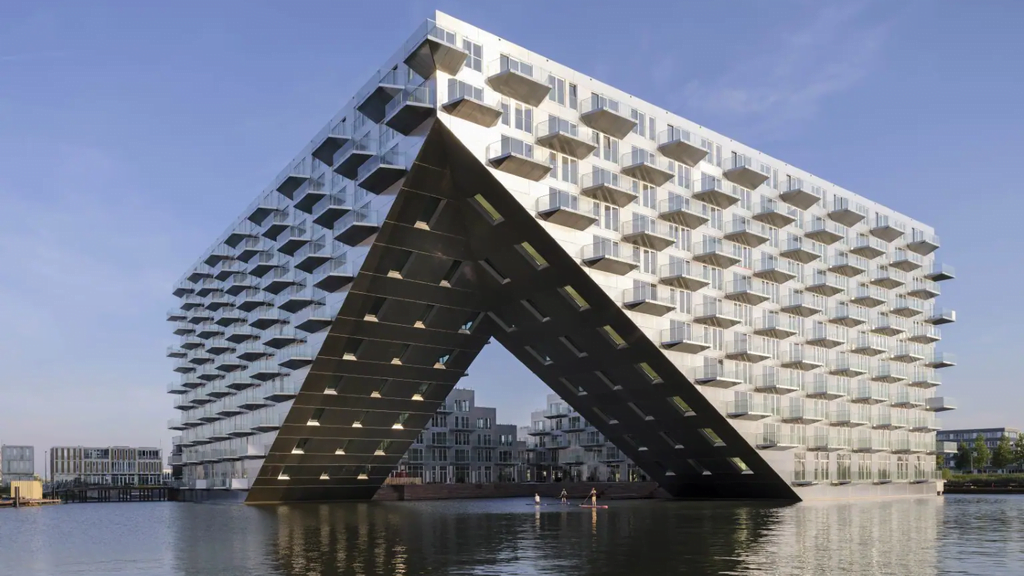
After the construction of the concave building in Rotterdam, which earned the mocking nickname ” Ikea’s salad bowl ” due to its resemblance to a metal bowl with a green garden sticking out of it, the construction of a three-tower residential complex called Valley was also completed this year. The buildings in the Valley made headlines thanks to their “broken” appearance, reminiscent of the devastating results of the bombing. In the last month, a new building with an unusual shape was added to the ever-growing list – The Sluishuis. In Hebrew, it means a boat chamber, a boat lane blocked on both sides is used to raise and lower the natural water level.
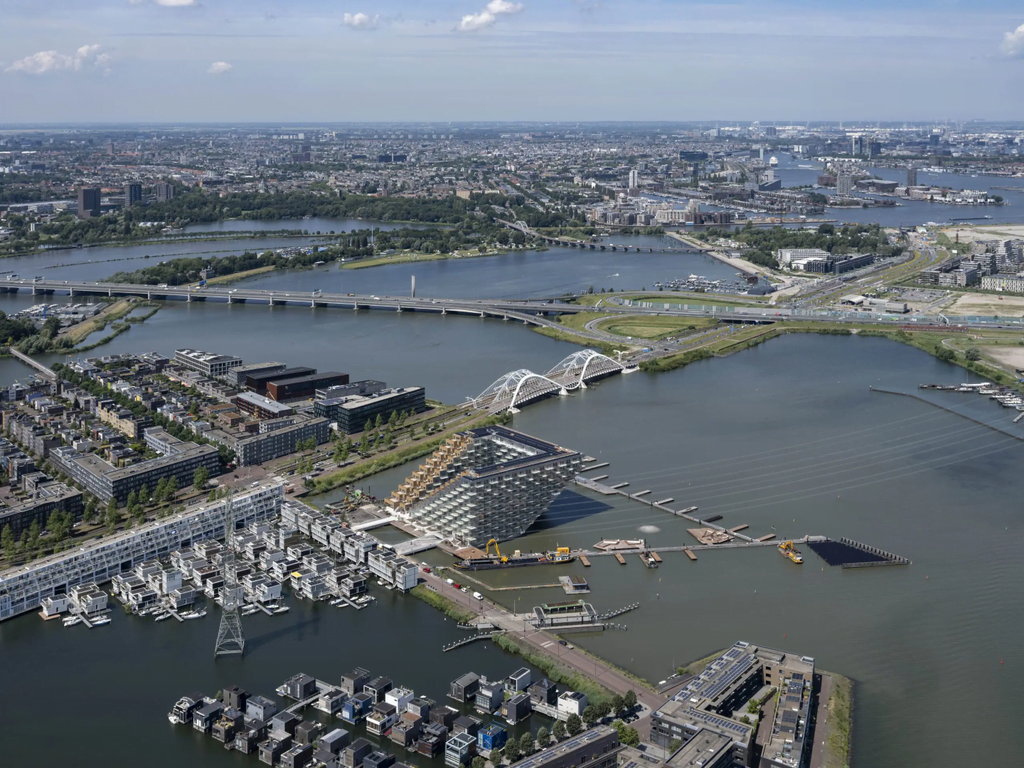
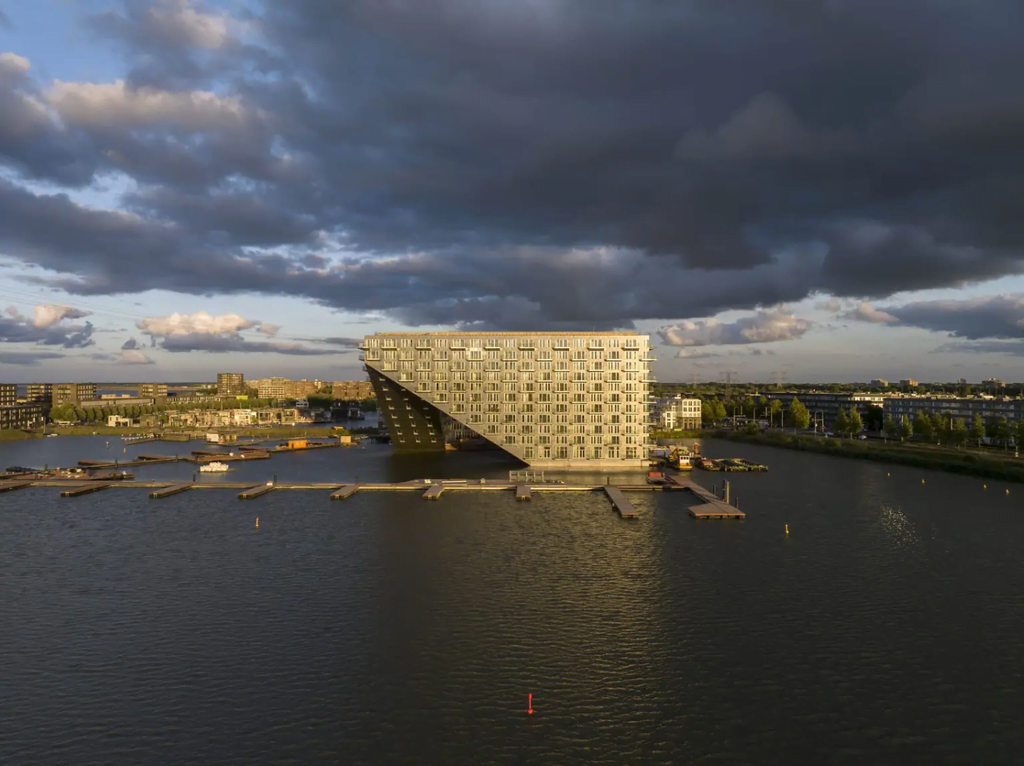
This is the newest project of the Danish architectural firm BIG in the Netherlands, in collaboration with the Dutch architectural firm BARCODE, whose construction took six years. The Sluishuis is a cooperative housing block designed on an artificial island in the Eyborg neighborhood, on the shores of the Eislemeer lake in East Amsterdam. The residential program, which is 50,000 square meters in size, includes 442 apartments in total, intended for rent and purchase for diverse target audiences with different income levels and age groups.
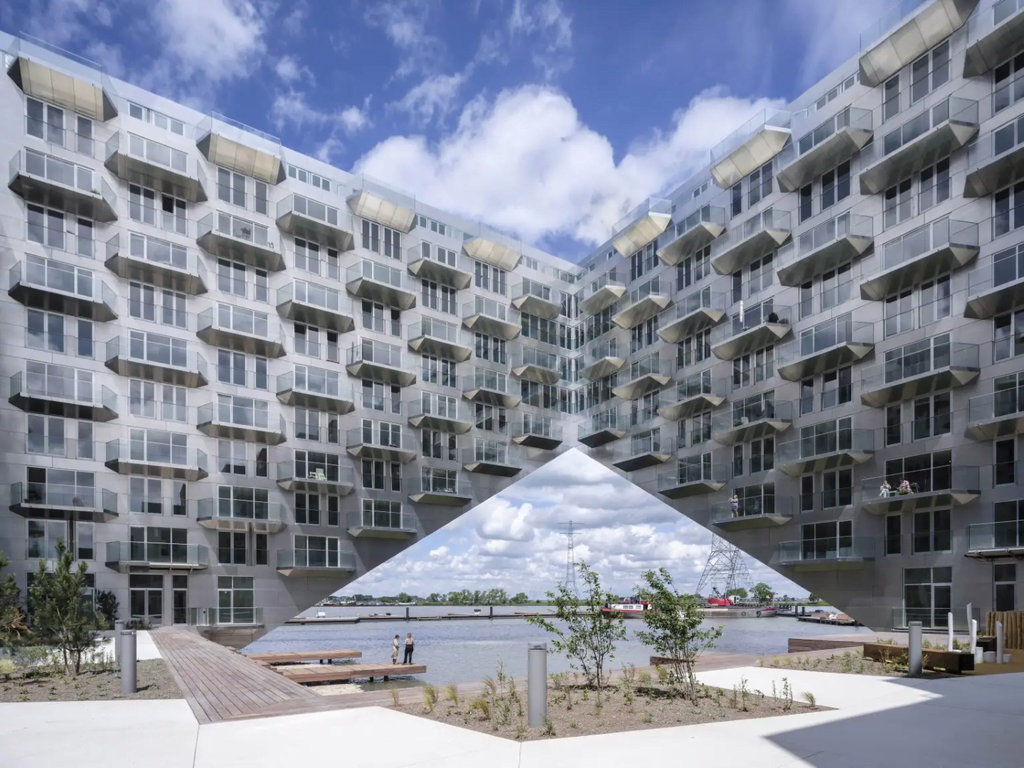
“With iconic architecture, as well as new housing typologies, high-quality outdoor spaces and breathtaking views of the Islemeer, Sluishuis is a new landmark for Amsterdam,” BIG founding partner Dirk Peters told the media. Read More cool garage ideas
rising from the river
The building itself consists of four blocks delimiting a public square crossed by water – a contemporary interpretation of the local historical architecture resting on the water. Instead of the typical straight facade, facing a water canal, the building located on the shores of Lake Aislemir is raised on one side in a way that makes the lake water part of the building’s courtyard and lowered on the other side to create terraces overlooking the neighborhood. “The building kneels to the direction of the city, to invite visitors to climb on its roof and enjoy the panoramic view of the new neighborhoods in the east of the city,” the ministry said in a statement.
The central courtyard forms a gateway to the lake and the port, and through it access to the apartments is also possible. The extension is planned to house in future a cafe with an open patio, a sailing school, and a water activity center, intended for residents and visitors. A mooring pier was built around the building for 34 boats that are used as floating houses. “The building is like rising from the river and opens a gate for boats to anchor in the port. It is a building within a port with a port within the building,” said architect Bjarke Ingels, founder of BIG.
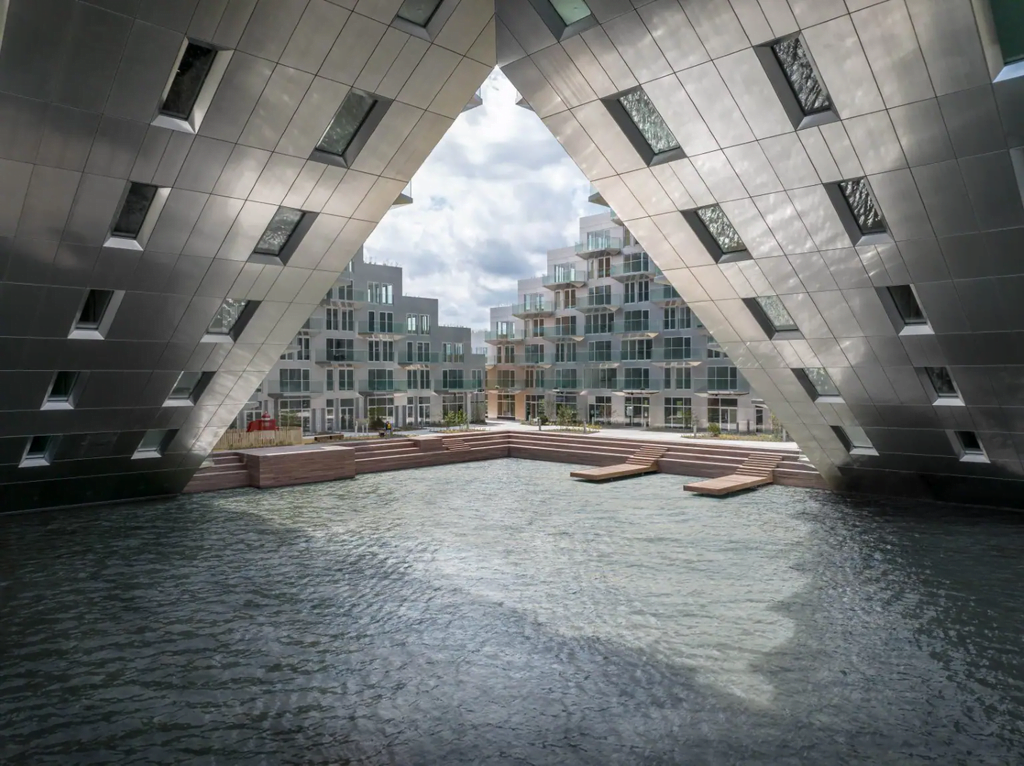
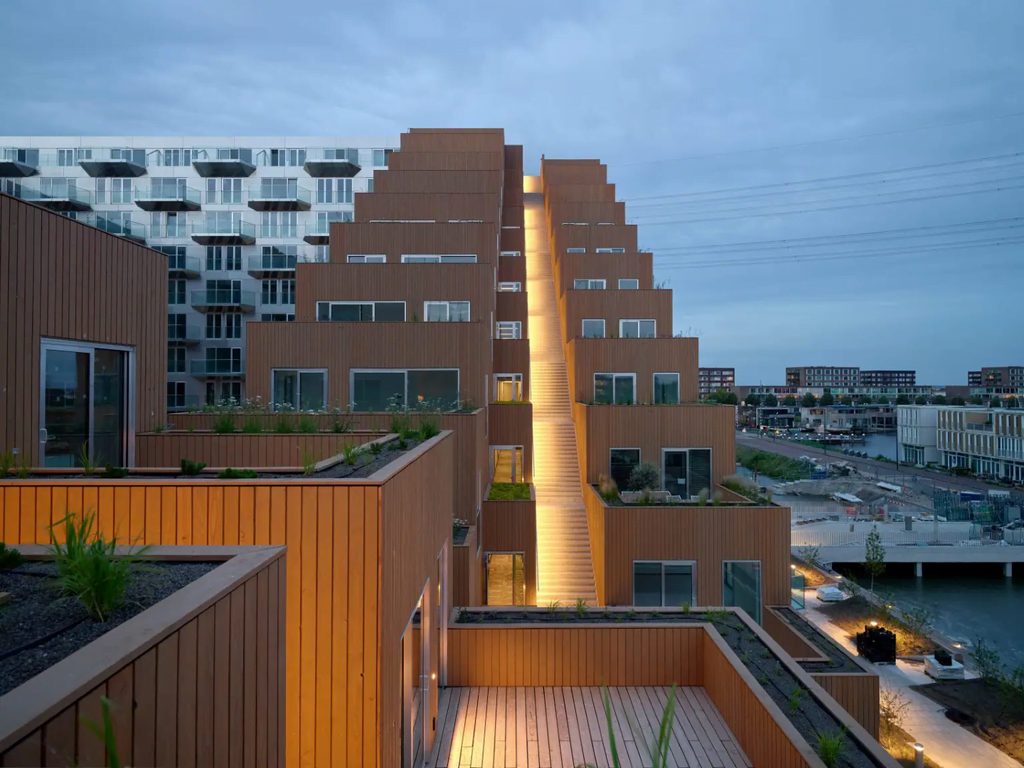
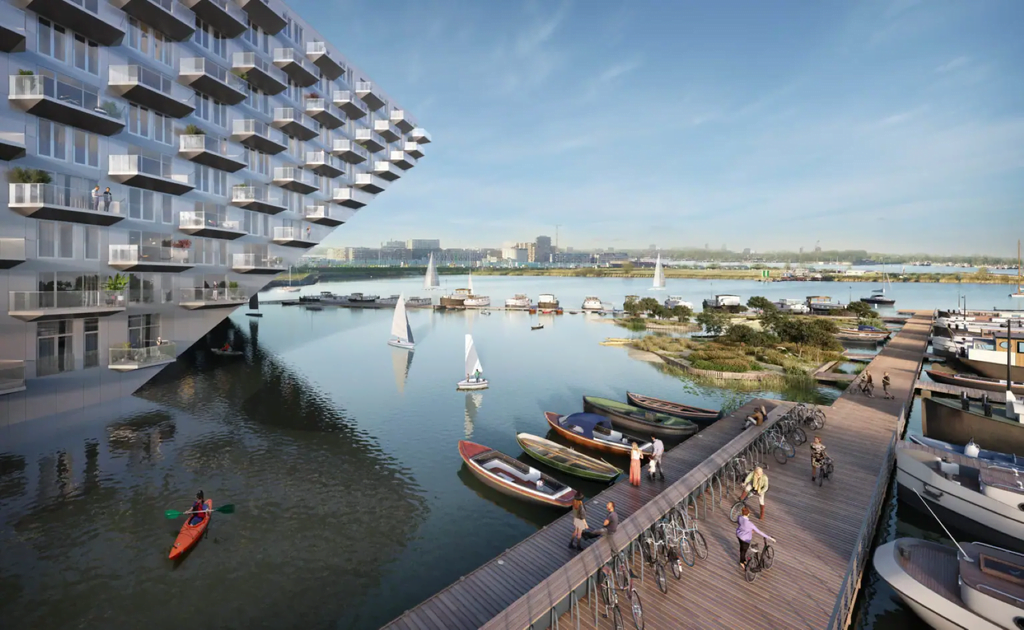
Connected to the environment, but separate from it
Similar to BIG’s previous projects, including the huge Google campus in San Francisco and a hotel room surrounded by hundreds of bird’s nests, great emphasis is placed on the aspect of sustainability, and the energy performance coefficient (EPC) in the building is zero. Thanks to a combination of good insulation methods, triple-glazed windows and an efficient ventilation system that regulates the water temperature in the building, the building’s heating requirements have been reduced to a minimum. Heat pumps work to heat the building and for energy-efficient district heating. The building’s solar panels spanning 2,200 square meters provide all the energy needed to operate the heat pumps, ventilation system and LED lighting.
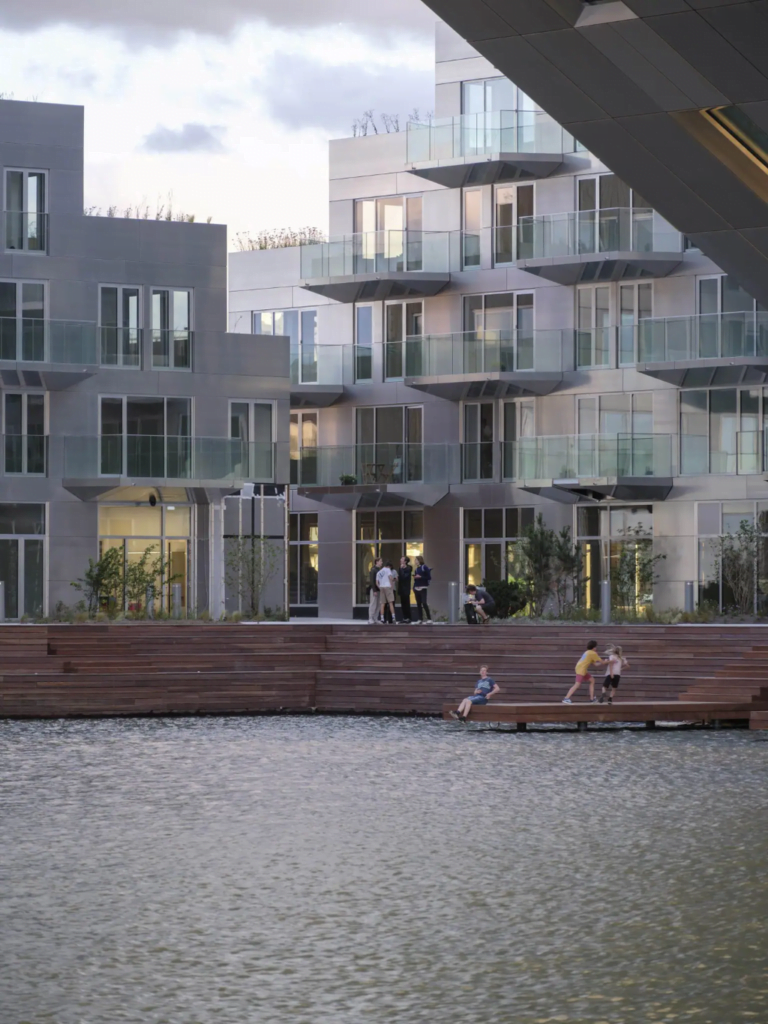
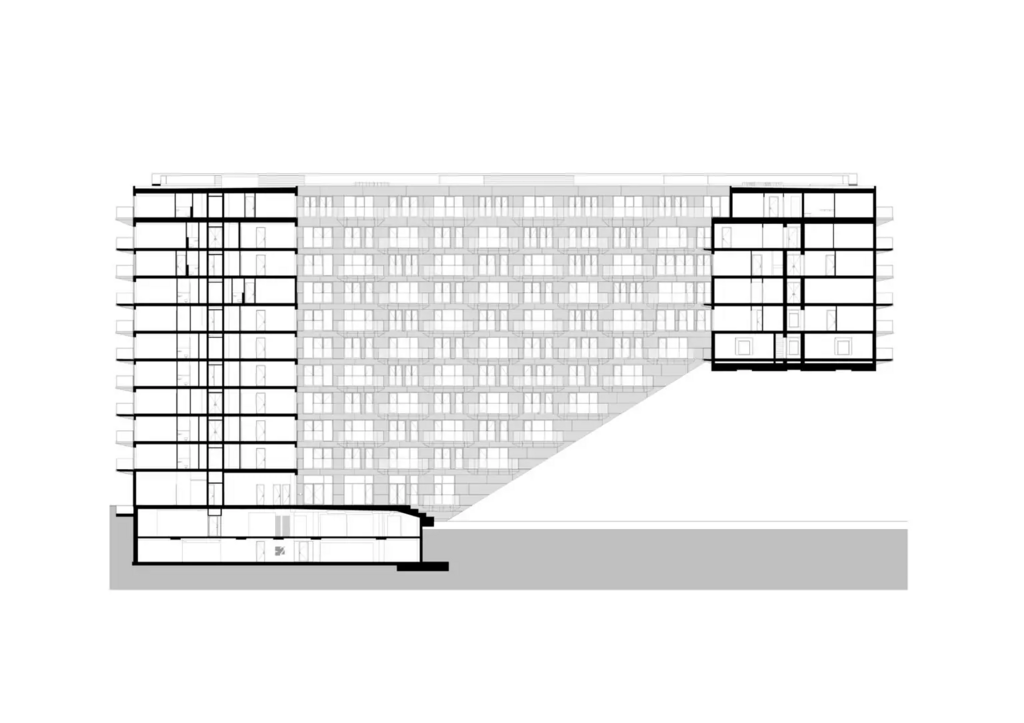
Besides the technological considerations, the field of gardening and water collection was carefully planned at Sluishuis. Besides the green roof, a garden including regional plant species was established in the yard and in the front, and built-in planters were integrated into the terraces. In addition, wood is used a lot alongside metal. The choice of natural material creates a connection to the environment, and at the same time highlights the presence of the building in the neighborhood. On the one hand, the water is reflected on the aluminum facade with its untreated finish, changing the appearance of the building during the day, and on the other hand, the use of wood cladding on the terraces and on the pier creates a fascinating dissonance between it and the surroundings.







Leave a Comment
You must be logged in to post a comment.